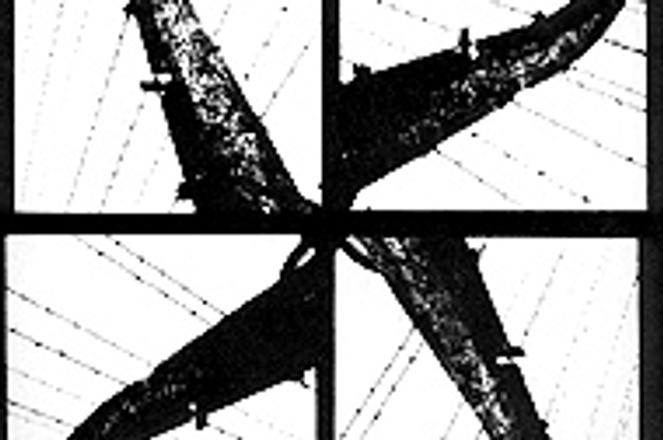THE POWER and emotion of barbwire.photo: Magdaléna Robinsonová
ONE of the main forces in Slovak photography after the second world war, Magdaléna Robinsonová survived concentration camps and fought in the national uprising. The horrors of war imprinted on her mind a permanent sense of optimism and desire for peace that she has transferred into her pictures.
"I went through hell. When I survived it, my soul ached for beauty. I have searched for it in the most ordinary things and I rejoice in what surrounds me," said the photographer, who turned 80 on May 17.
In celebration, the Bratislava City Gallery opened a retrospective exhibition of a hundred or so of her mainly black and white photographs at the Mirbach Palace. Friends and admirers of her work and her energetic approach to life queued for a couple of hours to congratulate her on the exhibition's opening on Friday, May 14.
"Robinsonová has added another dimension to the reality of photography - her emotion, which enabled her to make new connections and give her interpretation of reality," said Ľudmila Peterajová, the exhibition's curator.
The photographer has captured everything from the tragic events of concentration camps to the grotesque aspects of everyday Italian life. She has realistically portrayed Slovak artists and writers, photographed the monumentality of Slovak landscapes, and chronicled the nation's folk art. From this comes the cycle Scarecrows, the guardians of the harvest that have been disappearing from everyday life.
"She discovered the loose beauty and unconscious freedom of these fantastic creatures amid beautiful nature," Peterajová said.
SLOVAKIA's unconscious sculptures.photo: Magdaléna Robinsonová
According to Robinsonová, photographing scarecrows has been her life-long love. "It is actually my admiration of our very creative nation, which, while making its bread with sweat dripping down its face, tries to protect the fields and, meanwhile, creates sculptures without knowing what fantastic [artistic] value they have. I don't know if you can see that, but to me their beauty is indescribable."
The poster announcing the opening of her exhibition also attracted tourists, a couple from the US, who were just strolling past the palace that very day.
"I like the black and white in the photographs. They are beautifully composed; they have a great deal of depth, contrast, and subtlety. And the subjects in the pictures are very powerful - spanning from dead cows in a car, which is very dramatic, to child's drawings on a blackboard, which are beautifully photographed," said Martin Sherwin.
He and his wife, Susan, most liked the barbwire photos from concentration camps. "They are very powerful pictures; there's a lot of emotion. I don't know where it is but I can imagine it could be in a hundred different places, during WWII, the Cold War, in Palestine, in Israel, anywhere...," Sherwin said.
"In each of us there should be something that calls to us," Robinsonová said. "When walking down the street it is not enough just to notice the beauty around you. One should touch it with his or her soul. It is necessary to walk with open eyes and an open soul. And this can be found in each of us when we can give up the hunt for materialistic things, glory, and success."
The exhibition runs Tuesday to Sunday from 11:00 to 18:00 until June 20 at the Mirbach Palace at Františkánske námestie 11. Tel: 02/5443-1556 (or -7, -8).


